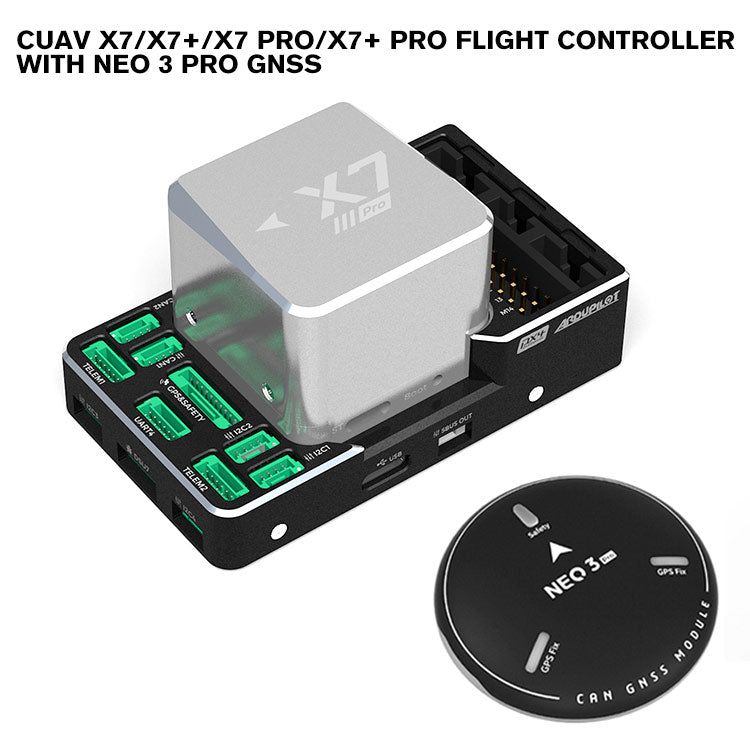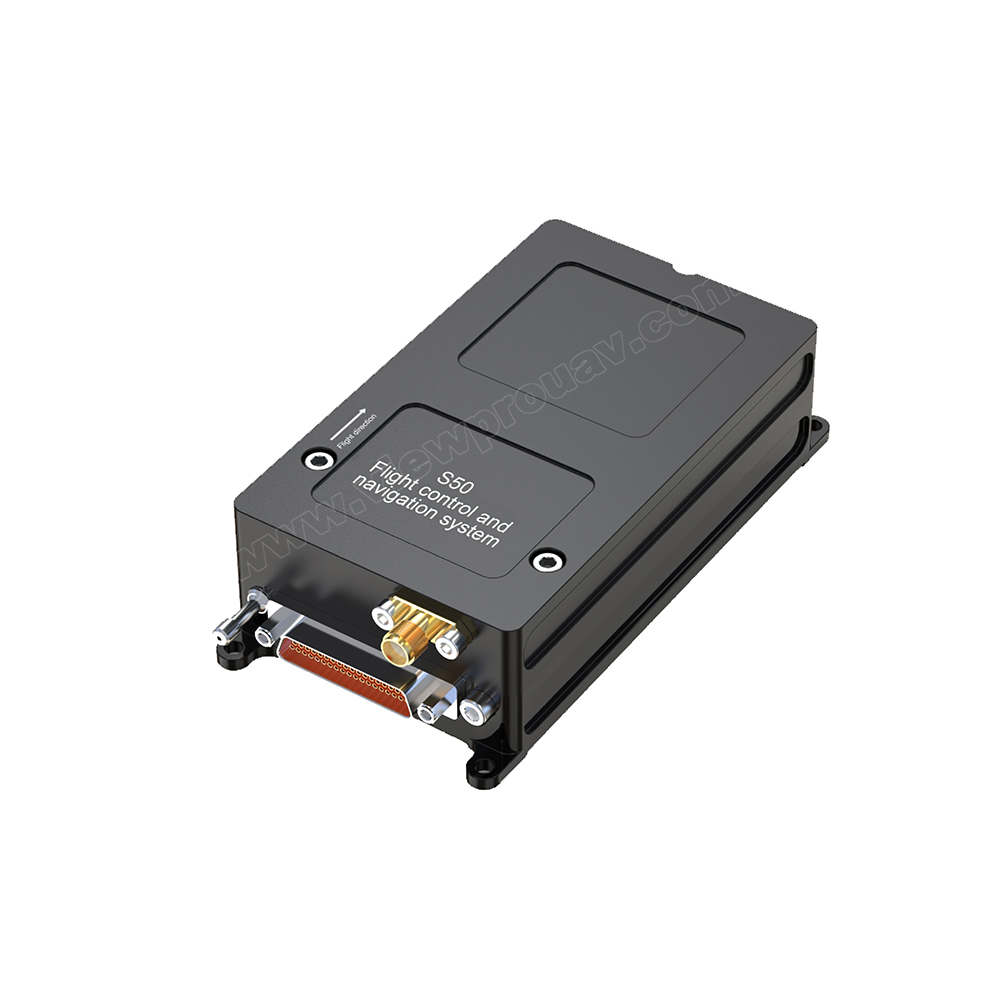Improve Drone Efficiency with SparkNavi Drone Flight Controller and GNSS/INS Made in Taiwan
Improve Drone Efficiency with SparkNavi Drone Flight Controller and GNSS/INS Made in Taiwan
Blog Article
Comprehending the Essential Functions and Functions of a Drone Trip Controller for Ideal Airborne Performance
The flight controller acts as the crucial element in a drone's style, orchestrating its movements and ensuring security through an advanced interaction of sensors and information handling. Understanding the vital attributes and features of these controllers is important for making the most of airborne performance, as they dictate not only navigational precision however additionally total safety and security and reliability. With developments in modern technology, the landscape of flight controllers is quickly progressing, motivating a more detailed assessment of what genuinely defines optimal capability in this essential system. What effects do these developments hold for both enthusiasts and professionals in the field?
Introduction of Flight Controllers
When exploring the globe of drone innovation, understanding flight controllers is crucial for both hobbyists and specialists alike. Trip controllers work as the mind of the drone, managing its movements and making certain security throughout trip (SparkNavi drone flight controller and GNSS/INS made in taiwan). They process information from various sensing units, including gyroscopes, accelerometers, and measures, to keep balance and respond to pilot inputs efficiently
The style of flight controllers can differ substantially, varying from standard variations developed for entry-level drones to advanced systems equipped with sophisticated features for expert applications. The combination of GPS capacities makes it possible for accurate navigating and positioning, while programmable firmware enables customers to customize flight qualities to fit their details demands.
Moreover, flight controllers are essential in promoting communication between the drone and the push-button control, enabling real-time changes and telemetry data transmission. Understanding the different kinds of flight controllers, including multi-rotor, fixed-wing, and crossbreed systems, is crucial for choosing the ideal design for an offered application. Inevitably, an extensive grasp of flight controllers not only enhances the flying experience but additionally maximizes the efficiency and safety of drone procedures.
Key Functions of Flight Controllers
Flight controllers play a pivotal duty in managing a drone's trip dynamics by performing several vital functions that make sure stability and responsiveness. Among the main features is the stablizing of the drone's alignment and elevation. This is attained via the assimilation of various sensing units, consisting of gyroscopes, accelerometers, and measures, which continuously keep track of the drone's setting and motion.
.jpg)
An additional crucial feature is the handling of control inputs from the pilot or self-governing systems. The flight controller interprets these inputs and adjusts the drone's electric motor rates as necessary to accomplish the preferred flight course. This consists of handling yaw, roll, and pitch, which are essential for maneuverability.
In addition, trip controllers are furnished with secure systems. These functions are made to react to important situations, such as reduced battery levels or loss of signal, by initiating predefined actions like going back to the launch factor or hovering in place.

Vital Functions to Consider
Various important features should be taken into consideration when picking a drone trip More hints controller to guarantee ideal performance and dependability. One important facet is the controller's handling power, which establishes its capacity to manage complicated flight formulas and real-time data processing. A greater processing capability boosts responsiveness and security during trip.
Another important attribute is the variety of sustained flight settings. A flexible flight controller need to provide various settings, including acro, elevation hold, and GPS-assisted modes, satisfying different pilot skill degrees and functional situations. Additionally, the existence of built-in safety and security features, such as fail-safes and geofencing, can significantly improve operational safety.
Compatibility with various interaction procedures is likewise vital, as it makes certain smooth combination with various other devices and peripherals, such as remote controllers and telemetry systems. Additionally, the controller's firmware must be straightforward and on a regular basis updated to include brand-new functions and optimizations.
Combination With Sensors and Solutions
A flight controller's efficiency is greatly influenced by its ability to integrate with numerous sensors and systems. This assimilation is important as it allows the trip controller to get real-time information essential for reliable flight monitoring. Secret sensing units consist of GPS, inertial measurement units (IMUs), barometers, and magnetometers, each giving vital info relating to the drone's elevation, orientation, and placement.

Furthermore, progressed flight controllers support assimilation with payload systems, including cams and various other sensors, enabling improved capabilities such as autonomous navigation and obstacle avoidance. This interconnectedness not just improves the drone's functional capacities but likewise expands its application prospective throughout different sectors, from airborne digital photography to farming monitoring. Thus, a well-integrated flight controller is essential for achieving optimal aerial efficiency and guaranteeing the integrity of drone procedures.
Tips for Optimizing Efficiency
To make the most of the efficiency of your drone, several vital techniques can be used that focus on optimizing both software and hardware elements. Initially, make sure that the trip controller firmware is up to day. Producers regularly release updates that boost stability, enhance capability, and repair pests. Routinely examining for my sources these updates can significantly impact your drone's efficiency.
Proper calibration reduces drift and improves trip security, especially throughout facility maneuvers. High-grade props can lower drag and increase trip time.
Tweak your flight setups, including PID (Proportional, Important, Derivative) values, to accomplish smooth and receptive handling. By carrying out these methods, drone drivers can considerably improve aerial efficiency, leading to a much more reliable and pleasurable flying experience.
Conclusion
In conclusion, a complete understanding of drone trip controllers is necessary for enhancing aerial efficiency. By focusing on these elements, operators can substantially boost the performance and reliability of their drone systems in diverse applications.
Trip controllers offer as the mind of the drone, orchestrating its motions and making sure security during flight.Flight controllers play an essential duty in taking care of a drone's flight dynamics by performing a number of vital features that ensure stability and responsiveness. The flight controller translates these inputs and readjusts the drone's electric motor rates as necessary to achieve the desired trip course.Countless essential functions need to be taken right into account when choosing a drone trip controller to guarantee optimum performance and reliability. Thus, a well-integrated trip controller is basic for attaining optimum airborne efficiency and making sure the integrity of drone procedures.
Report this page